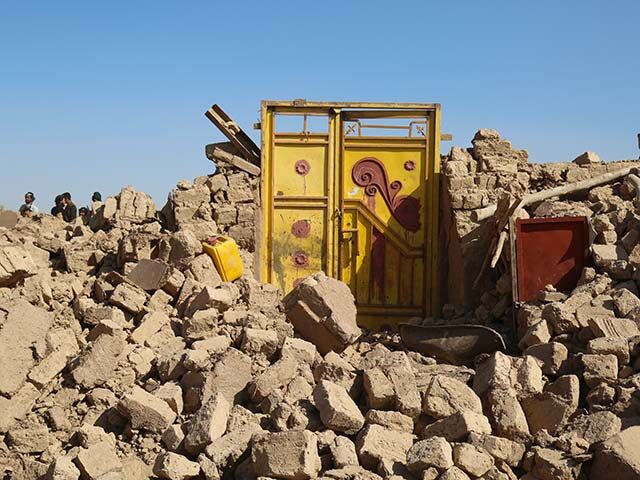Afghanistan was struck by its deadliest earthquake in years on Sunday, with more than 2,400 casualties reported at last count from the northwestern city of Herat and its surrounding province.
The U.S. Geological Survey (USGS) rated the quake at magnitude 6.3 and said its epicenter was in the rural district of Zindajan, about 20 miles northwest of Herat.
The U.N. Office for the Coordination of Humanitarian Affairs (OCHA) said “one hundred percent of homes are estimated to have been completely destroyed” in Zindajan. Herat itself suffered relatively minor damage to its ancient minarets. Eyewitnesses said one reason the disaster response was slow for rural communities was that Herat was left largely intact and, since cellphone service was out, rescuers in Herat did not immediately realize how badly damaged the surrounding villages were.
The Taliban regime struggled to produce solid estimates of how many people were killed, or even how many people live in Zindajan, since its population includes a large number of displaced persons.
Reuters explained on Monday that houses in earthquake-prone Afghanistan, which straddles at least two active fault lines, are not really built to handle tremors:
Structures are either made of burnt bricks with cement mortar or are sun-dried brick masonry buildings with load bearing walls. The thickness of the walls ranges from 20 to 30 cm for the burnt bricks and about 40 cm to 80 cm for the sun-dried brick structures. These homes can be covered by large and often heavy roofs that can cave into the structure, making them extremely vulnerable to seismic activity, according to the report.
The Herat region has not been a hotbed of seismic activity until now, so the buildings and residents were especially unprepared for Sunday’s powerful quake. “Nobody was prepared,” a rescue worker with CARE Afghanistan told the Washington Post.
Another rescue worker said many of the houses struck by the quake collapsed within seconds, trapping people who were in the process of running for the exits.
Afghanistan’s independent Tolo News reported the Naib Rafi village in Zindajan was “destroyed completely,” and roughly 80 percent of its population was killed.
“The people here are stranded under wreckage. The people of other districts came here to help. All the people have been eliminated. Three shepherds were working here while the [earthquake] destroyed them. When they came back here, no one was alive, they were all under ruins,” a Zindajan resident told Tolo News.
A spokesman for the Afghan Ministry of Disaster Management rattled off a list of 13 villages largely or completely destroyed by the earthquake, along with a large quantity of livestock, which is bad news for a country teetering on the verge of mass starvation.
The death toll was doubtless exacerbated by the general incompetence of the Taliban regime, and the shortage of humanitarian funding as its barbaric practices have driven international donors away.
“While there was still hope, more people were being pulled from ruined buildings dead than alive on Monday. Afghanistan’s hospitals, already over-stretched and severely under-equipped since in the wake of the Taliban’s chaotic seizure of the country, were quickly overwhelmed,” CBS News reported.
A spokesman for Doctors Without Borders (RSF) said on Monday that many of the quake victims treated at the Herat Regional Hospital “do not have homes to return to,” so they are “remaining in the hospital while authorities look for alternative places for them to stay.”
According to the United Nations, both the injured survivors and the dead include a large number of women and children.
“The Taliban government has said quake survivors are in urgent need of food, drinking water, medicine, clothes and tents for shelter. Several aid agencies have dispatched help, including the Afghan Red Cross Society, MSF, World Food Program and Unicef. But the agencies say the cash-strapped country needs more aid,” the BBC wrote on Monday.

COMMENTS
Please let us know if you're having issues with commenting.